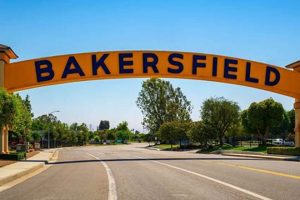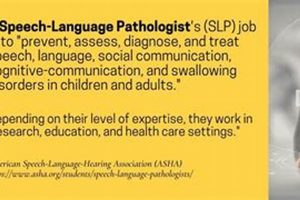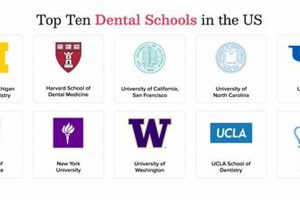Specialized educational institutions catering to neurodivergent students with autism spectrum disorder (ASD) exist throughout the United States. These schools offer tailored curricula, therapeutic interventions, and supportive environments designed to address the unique learning styles and developmental needs of autistic individuals. Examples include schools employing applied behavior analysis (ABA) therapy, sensory integration techniques, and individualized education programs (IEPs).
Access to appropriate educational settings significantly impacts the academic, social, and emotional development of autistic learners. Effective programs foster communication skills, independence, and social interaction while addressing potential challenges such as sensory sensitivities and executive functioning difficulties. Historically, educational options for autistic individuals were limited. The evolution toward specialized schools reflects growing awareness and understanding of ASD, leading to the development of more effective and inclusive educational practices.
Factors influencing the suitability of a specific school include the student’s age, learning profile, support needs, and geographic location. The following sections will delve into crucial considerations for parents and educators seeking optimal learning environments for autistic students, including program types, accreditation standards, and available resources.
Tips for Selecting Appropriate Educational Settings for Autistic Students
Choosing the right educational environment is crucial for the successful development of autistic learners. Careful consideration of individual needs and available resources is essential.
Tip 1: Prioritize Individualized Education Programs (IEPs): Ensure the school develops and implements comprehensive IEPs tailored to each student’s specific learning goals, strengths, and challenges.
Tip 2: Evaluate Therapeutic Interventions: Investigate the therapeutic services offered, such as applied behavior analysis (ABA) therapy, occupational therapy, speech therapy, and social skills training. Confirm the availability of qualified professionals and the integration of therapeutic approaches within the curriculum.
Tip 3: Assess Sensory Environment: Consider the sensory environment of the school, ensuring appropriate accommodations are available for students with sensory sensitivities. Look for features like quiet areas, sensory rooms, and adjustable lighting.
Tip 4: Focus on Communication and Social Skills Development: Prioritize programs that emphasize communication skill development and provide opportunities for social interaction and peer engagement.
Tip 5: Seek Qualified and Experienced Staff: Confirm that the school employs educators and therapists with specialized training and experience working with autistic students. Inquire about staff-to-student ratios and professional development opportunities.
Tip 6: Visit and Observe Potential Schools: Schedule visits to observe classrooms, interact with staff, and gain a firsthand understanding of the school’s environment and culture.
Tip 7: Engage with Parent and Student Communities: Connect with current parents and students to gather feedback and insights into their experiences with the school.
By carefully considering these factors, parents and educators can identify educational settings that effectively support the unique needs of autistic learners and promote their academic, social, and emotional growth.
Implementing these strategies promotes a positive and productive learning experience, ultimately fostering greater independence and success for autistic individuals.
1. Specialized Curriculum
A hallmark of leading institutions for autistic students is the presence of a specialized curriculum. This tailored approach recognizes the diverse learning styles and needs within the autism spectrum and provides targeted instruction to maximize individual potential. A well-designed specialized curriculum addresses core academic areas while incorporating critical social-emotional learning and life skills development.
- Structured Teaching:
Structured teaching methodologies offer predictability and visual supports, reducing anxiety and promoting engagement. Visual schedules, clear expectations, and organized workspaces provide a framework for learning, enabling autistic students to navigate academic tasks more effectively. This approach can be observed in classrooms utilizing the TEACCH method, where structured environments and activities foster independence and skill development.
- Social Skills Instruction:
Explicit instruction in social skills is a key component of specialized curricula. These programs utilize evidence-based strategies, such as social stories, role-playing, and video modeling, to teach pragmatic language, social cues, and appropriate interaction skills. The impact is evident in improved peer relationships and increased social competence.
- Sensory Integration:
Sensory integration techniques are often woven into the curriculum to address sensory sensitivities common among autistic individuals. Incorporating sensory breaks, movement activities, and adaptive equipment allows students to regulate their sensory input, optimizing their ability to focus and learn. This might involve designated sensory spaces within the school or individualized sensory strategies integrated into classroom activities.
- Functional Life Skills:
Specialized curricula also prioritize functional life skills that promote independence and successful transition to adulthood. Instruction in areas such as daily living skills, vocational training, and community integration prepares students for real-world situations and empowers them to live fulfilling lives. This may include practical exercises like cooking, managing finances, or utilizing public transportation.
These facets of a specialized curriculum contribute significantly to the efficacy of top-performing schools for autistic students. By addressing the unique needs and learning profiles of these individuals, these programs foster academic success, social-emotional growth, and preparation for a meaningful future. The effectiveness of these programs can be further enhanced through ongoing assessment, collaboration between educators and therapists, and parent involvement.
2. Therapeutic Interventions
Therapeutic interventions constitute a cornerstone of effective educational programs for autistic students. Leading schools prioritize access to a range of evidence-based therapies integrated into the educational setting. These interventions address core challenges associated with autism spectrum disorder (ASD) and support students’ academic, social, emotional, and behavioral development.
- Applied Behavior Analysis (ABA) Therapy:
ABA therapy, a widely recognized and scientifically validated intervention, plays a crucial role in addressing challenging behaviors and skill deficits in autistic students. ABA principles are applied to teach new skills, reduce problematic behaviors, and promote adaptive functioning. In a school setting, ABA might involve discrete trial training to teach communication skills or functional behavior assessments to understand the underlying causes of challenging behaviors. The effectiveness of ABA is documented in numerous studies demonstrating significant improvements in communication, social interaction, and daily living skills.
- Speech and Language Therapy:
Communication challenges are prevalent among autistic individuals. Speech and language therapy focuses on improving communication skills, including articulation, receptive language, expressive language, and pragmatic language. Therapists work with students individually or in small groups, utilizing techniques such as augmentative and alternative communication (AAC) devices, picture exchange communication systems (PECS), and social scripts. Effective speech and language therapy contributes significantly to enhanced communication abilities, increased social participation, and improved academic performance.
- Occupational Therapy:
Occupational therapy addresses sensory processing difficulties, fine motor skills development, and daily living skills. Therapists work with students to improve sensory regulation, enhance motor coordination, and develop self-care skills. In a school setting, occupational therapy might involve sensory integration activities, fine motor skill practice, or adaptive equipment training. Occupational therapy contributes to increased independence, improved participation in classroom activities, and enhanced quality of life.
- Social Skills Groups:
Social skills groups provide structured opportunities for autistic students to practice social interaction skills in a supportive environment. These groups typically utilize evidence-based strategies, such as role-playing, video modeling, and social stories, to teach appropriate social behaviors, improve communication skills, and build peer relationships. Participation in social skills groups can lead to increased social competence, reduced social anxiety, and enhanced integration within the school community.
The integration of these therapeutic interventions within the educational framework distinguishes high-quality programs for autistic students. Access to these services contributes significantly to student success by addressing core challenges associated with ASD and promoting holistic development. The effectiveness of these interventions is further enhanced by collaboration among therapists, educators, and parents, ensuring a cohesive and individualized approach to support each student’s unique needs.
3. Experienced Staff
A defining characteristic of leading schools for autistic students is the presence of experienced staff. Specialized training and extensive experience working with autistic individuals are essential for effectively addressing the complex needs of this population. Experienced educators and therapists possess a deep understanding of autism spectrum disorder (ASD), enabling them to implement evidence-based practices and create supportive learning environments. This expertise translates directly into improved outcomes for autistic students. For example, teachers experienced in Applied Behavior Analysis (ABA) can effectively implement individualized behavior intervention plans, leading to reductions in challenging behaviors and increases in adaptive skills. Similarly, speech-language pathologists with specialized training in autism can implement targeted interventions to address communication challenges, facilitating improved social interaction and academic performance.
The impact of experienced staff extends beyond direct instruction. Experienced professionals are adept at recognizing and responding to the diverse sensory needs of autistic students. They can create classroom environments that minimize sensory overload and promote optimal learning. Furthermore, experienced staff members contribute to a school’s overall capacity to foster inclusive communities. Their understanding of ASD informs school-wide policies and practices, creating a culture of acceptance and support. This inclusive environment promotes social-emotional growth and a sense of belonging, essential for autistic students’ overall well-being. For instance, a school with experienced staff might implement sensory-friendly events or peer mentoring programs to foster positive social interactions and create a more inclusive school community.
Effective programs recognize the critical role of ongoing professional development. Leading schools invest in continuous training for their staff, ensuring they stay abreast of the latest research and best practices in autism education. This commitment to professional growth enhances staff expertise and strengthens the school’s ability to provide high-quality, evidence-based services. The presence of experienced staff, coupled with ongoing professional development, represents a key indicator of a school’s commitment to providing effective education and support for autistic students. This ultimately translates into enhanced learning outcomes, improved quality of life, and greater opportunities for autistic individuals to reach their full potential.
4. Sensory Integration
Sensory integration plays a pivotal role in distinguishing exceptional educational settings for autistic students. Autistic individuals often experience differences in sensory processing, leading to sensitivities or challenges in interpreting and responding to sensory input. This can manifest as over-responsivity (e.g., distress from loud noises or bright lights), under-responsivity (e.g., seeking intense sensory experiences), or sensory-seeking behaviors. Schools recognized for effectively supporting autistic learners prioritize sensory integration as a core component of their programs. These schools understand the profound impact sensory processing differences can have on learning, behavior, and overall well-being. Addressing these differences is not merely about managing challenging behaviors; it’s about creating an environment where autistic students can access the curriculum and engage fully in their education. For instance, a student experiencing auditory hypersensitivity might struggle to concentrate in a noisy classroom. Providing noise-reducing headphones or designating a quiet area can significantly improve their ability to focus and learn.
Effective sensory integration strategies are incorporated throughout the school environment and curriculum. Classrooms are designed with sensory considerations in mind, including adjustable lighting, designated quiet spaces, and access to sensory tools and equipment. Sensory breaks are integrated into the daily schedule, allowing students to regulate their sensory systems and avoid overstimulation. Furthermore, educators trained in sensory integration principles embed sensory strategies within academic activities and lessons. This might involve incorporating movement breaks, using visual supports, or providing tactile learning materials. For example, a student who benefits from proprioceptive input might be given opportunities to engage in heavy work activities, such as carrying books or pushing a weighted cart, to help them regulate their sensory system and improve focus. Similarly, incorporating visual timers and schedules can help students with difficulties processing auditory information anticipate transitions and reduce anxiety.
The successful integration of sensory strategies fosters a more inclusive and supportive learning environment. By addressing the unique sensory needs of autistic students, schools create spaces where these learners can thrive academically, socially, and emotionally. Sensory integration is not simply an add-on; it is an integral component of creating an optimal learning experience for autistic students. It contributes significantly to their ability to access the curriculum, engage in learning, and develop to their full potential. The absence of appropriate sensory supports can create significant barriers to learning, while the thoughtful incorporation of these strategies can transform the educational experience for autistic students, enabling them to participate fully and achieve their academic goals.
5. Individualized Support
Individualized support forms the cornerstone of effective education for autistic students. Distinguished programs recognize the diverse needs within the autism spectrum and prioritize tailored instruction, personalized goals, and customized support services. This approach acknowledges that what works for one autistic student may not be suitable for another. Individualized support maximizes learning potential and fosters overall well-being by addressing each student’s unique strengths, challenges, and learning preferences.
- Individualized Education Programs (IEPs):
IEPs serve as the roadmap for individualized support. These legally mandated documents outline specific learning goals, accommodations, and support services tailored to each student’s needs. IEPs are developed collaboratively by parents, educators, and related service providers. A well-crafted IEP addresses academic goals, social-emotional development, behavioral needs, and communication skills. For example, an IEP might include accommodations such as extended time on tests, preferential seating, or the use of assistive technology. It also specifies the frequency and type of therapeutic interventions, such as speech therapy or occupational therapy. Regular review and revision of IEPs ensure that they remain responsive to the student’s evolving needs.
- Adaptive Instruction and Assistive Technology:
Adaptive instruction modifies teaching methods and materials to match individual learning styles and abilities. This might involve using visual supports, providing hands-on activities, or breaking down complex tasks into smaller, manageable steps. Assistive technology, such as text-to-speech software, communication apps, or sensory tools, further enhances access to the curriculum and facilitates communication. For instance, a student with dysgraphia might benefit from using a word processor with spell-check and grammar-check features. A student with communication challenges might utilize a speech-generating device or picture exchange communication system.
- Strength-Based Approaches:
Effective individualized support recognizes and builds upon each student’s strengths and interests. Incorporating these strengths into the curriculum enhances motivation, engagement, and self-esteem. For example, a student with a strong interest in dinosaurs might be given opportunities to research and present information about dinosaurs, integrating this interest into literacy and science lessons. Focusing on strengths fosters a sense of competence and empowers autistic students to experience success.
- Transition Planning:
Individualized support extends beyond the classroom to encompass transition planning. Preparing autistic students for post-secondary education, employment, and independent living requires careful planning and individualized support. Transition plans address vocational training, life skills development, community integration, and self-advocacy skills. For example, a transition plan might include internships, job shadowing experiences, or participation in community-based programs. These experiences provide valuable opportunities for autistic students to develop the skills and confidence necessary for successful transitions to adulthood.
The commitment to individualized support distinguishes exemplary programs for autistic students. By tailoring educational experiences to individual needs and strengths, these schools foster academic success, social-emotional growth, and preparation for a fulfilling future. Individualized support is not simply a set of strategies; it represents a philosophy of education that values and celebrates the unique contributions of each autistic learner. This approach recognizes that autistic students are not a homogenous group and that individualized support is essential for unlocking their full potential and empowering them to thrive.
6. Inclusive Community
Optimal educational settings for autistic students recognize the profound impact of an inclusive community. A truly inclusive environment extends beyond simple integration; it fosters a sense of belonging, acceptance, and mutual respect among all members. Within the context of leading autistic schools, an inclusive community plays a vital role in promoting social-emotional growth, reducing stigma, and maximizing learning opportunities for autistic students. This inclusive ethos permeates all aspects of the school, from classroom dynamics and social activities to school-wide policies and administrative practices. Building an inclusive community requires intentional effort, ongoing reflection, and a commitment to creating a culture where every student feels valued and respected.
- Peer Interaction and Support:
Meaningful peer interactions are crucial for social-emotional development. Inclusive schools foster opportunities for autistic students to interact with neurotypical peers in both structured and unstructured settings. Structured activities, such as peer mentoring programs or collaborative learning projects, provide opportunities for students to develop social skills, build friendships, and learn from one another. Unstructured social time during recess or lunch breaks allows for spontaneous interaction and the development of organic peer relationships. Creating opportunities for positive peer interactions fosters a sense of belonging and helps to break down social barriers and stereotypes.
- Educator Training and Awareness:
Creating an inclusive community requires educators to possess a deep understanding of autism spectrum disorder (ASD) and the diverse ways it manifests in individuals. Professional development focused on ASD, inclusive teaching practices, and differentiated instruction equips educators with the knowledge and skills to create supportive and responsive classrooms. Educators who understand ASD are better able to recognize and address the individual needs of autistic students, adapt their teaching styles, and create a learning environment where all students feel valued and respected. This training extends beyond classroom teachers to include all school staff, such as administrators, support staff, and bus drivers.
- Parent and Family Involvement:
Parental involvement is essential for building a strong and inclusive school community. Schools that prioritize inclusion actively engage parents of both autistic and neurotypical students. Parent-teacher organizations, support groups, and school-wide events provide opportunities for parents to connect, share experiences, and collaborate with educators. Open communication between parents and school staff fosters a sense of shared responsibility and strengthens the overall school community. Parents of autistic students can offer valuable insights into their children’s strengths, challenges, and learning preferences. Parents of neurotypical students can play a crucial role in promoting acceptance and understanding of ASD among their children and within the broader community.
- Curriculum and Instruction that Values Diversity:
An inclusive curriculum reflects the diversity of the student population and promotes understanding and acceptance of individual differences. Incorporating literature, discussions, and activities that celebrate neurodiversity helps to create a more inclusive and accepting school culture. Lessons that explore different learning styles, communication styles, and perspectives broaden students’ understanding of themselves and others. An inclusive curriculum fosters empathy, reduces stigma, and promotes a sense of belonging for all students.
These facets of an inclusive community are integral to the success of the best autistic schools in the USA. By prioritizing inclusive practices, these schools create environments where autistic students can thrive academically, socially, and emotionally. An inclusive community not only benefits autistic students; it also enriches the educational experience for all students by fostering a culture of empathy, understanding, and mutual respect. These inclusive environments cultivate a sense of belonging for all learners, creating a positive and supportive school climate that promotes academic achievement, social-emotional growth, and a lifelong appreciation for diversity.
Frequently Asked Questions about Specialized Education for Autistic Students
This section addresses common inquiries regarding educational options for students with autism spectrum disorder (ASD).
Question 1: What distinguishes schools specializing in autism education from traditional schools?
Specialized schools offer tailored curricula, therapeutic interventions (e.g., ABA therapy, speech therapy), and smaller class sizes with trained staff experienced in working with autistic students. Traditional schools may not have the same level of specialized resources and expertise.
Question 2: How can one determine the appropriate school for an autistic child’s specific needs?
Consider the child’s age, learning profile, sensory sensitivities, and support needs. Consult with therapists, educators, and other professionals familiar with the child’s development. Visiting potential schools and engaging with current parents can provide valuable insights.
Question 3: Are there specific accreditation standards for schools specializing in autism education?
While national accreditation standards specifically for autism education are not universally established, various accrediting bodies exist for special education programs. Inquire about a school’s accreditation status and its alignment with recognized best practices in autism education. Additionally, consider state-specific licensing requirements.
Question 4: What financial resources are available to support autistic students’ education?
Funding options vary depending on location and individual circumstances. Explore available resources, including government-funded programs, scholarships, grants, and tax credits designed to support students with disabilities. Consult with financial advisors or educational consultants specializing in special needs funding.
Question 5: How can parents effectively advocate for their autistic child’s educational needs within a school setting?
Open communication with the school’s IEP team is crucial. Document the child’s strengths, challenges, and progress. Engage actively in IEP meetings, advocating for appropriate accommodations, services, and educational goals. Connect with parent advocacy groups for support and resources.
Question 6: What long-term outcomes can be expected from specialized education for autistic individuals?
Specialized education aims to equip autistic individuals with the skills necessary for increased independence, successful transitions to adulthood, and meaningful participation in their communities. Outcomes vary depending on individual needs and abilities, but effective programs can significantly enhance academic achievement, social skills, communication abilities, and overall quality of life.
Choosing the right educational environment is crucial for an autistic student’s development. Thorough research, open communication, and active advocacy are essential for ensuring access to appropriate support and resources.
The subsequent section will explore specific program models and educational approaches commonly employed in effective schools for autistic students. Understanding these different models can further assist families and educators in making informed decisions.
Specialized Education
Optimal educational settings for students with autism spectrum disorder require careful consideration of various factors. A specialized curriculum, tailored therapeutic interventions, experienced staff, and a supportive sensory environment are critical components. Individualized support through IEPs, assistive technologies, and transition planning ensures students receive the necessary tools for success. Cultivating an inclusive community fosters social-emotional growth and a sense of belonging, enriching the educational experience for all. The exploration of program models, accreditation standards, and available resources empowers families and educators to make informed decisions, aligning educational choices with individual student needs.
Effective education for autistic individuals is not merely about academic achievement; it is about fostering independence, maximizing potential, and promoting fulfilling lives. Continued advocacy, research, and collaboration are essential to ensuring that all autistic students have access to the specialized support and resources they need to thrive. Investing in specialized education is an investment in the future, empowering autistic individuals to reach their full potential and contribute meaningfully to society. The pursuit of excellence in autism education requires ongoing dedication, innovation, and a commitment to creating inclusive communities where all learners can flourish.







